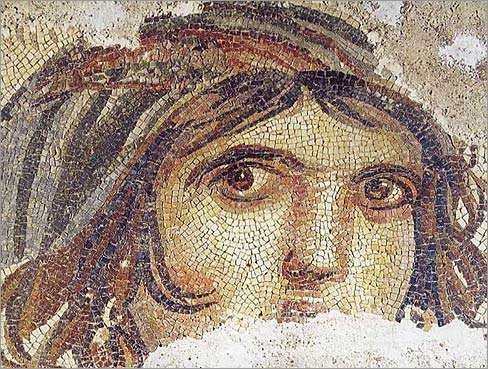
|

|
Gypsy Girl (Gaea)
Scholars have suggested that the Gypsy Girl, named for the wild look
in her eyes, might be Gaea, goddess of the Earth. Hesiod, the
8th-century B.C. Greek poet, whose account of how the gods came into
existence is considered the classic version, says that in the
beginning there was Chaos, which in Greek means "yawning." Into that
yawning, or void, came Gaea (Earth), Tartarus (the lowest region of
the underworld), Eros (Love), Erebus (the personification of
Tartarus) and Night. With Uranus, god of the sky, Gaea gave birth to
the Titans, 12 gods that included
Oceanus and Tethys.
|


